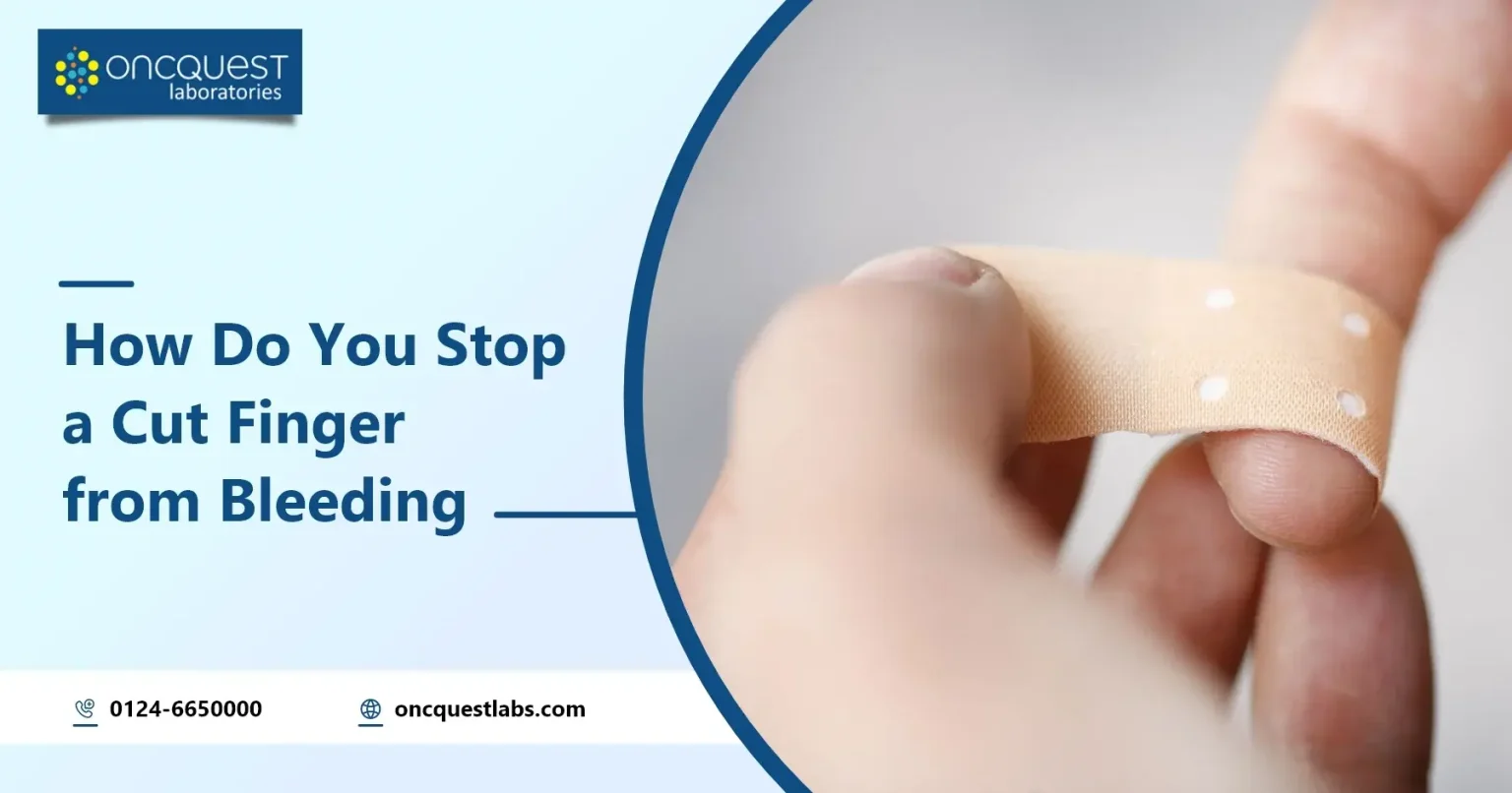Dealing with a cut finger can be a common occurrence in our daily lives, but knowing how to stop the bleeding promptly is crucial. In this quick guide, we’ll explore simple and effective steps to help you manage and stop the bleeding from a cut finger.
1. Stay Calm:
The first step is to remain calm. Panicking can increase blood flow, making it more challenging to control the bleeding.
2. Clean the Wound:
Gently clean the cut finger with mild soap and water to prevent infection. Pat it dry with a clean cloth.
3. Apply Pressure:
Use a sterile bandage or clean cloth to apply direct pressure on the cut. Maintain this pressure for a few minutes until the bleeding stops.
4. Elevate the Hand:
Elevating the hand can help reduce blood flow to the injured area, aiding in the clotting process. Keep the hand raised above the level of the heart.
5. Use a Pressure Point:
If direct pressure doesn’t control the bleeding, you can try applying pressure to a pressure point. Press down on the artery near the wound to slow down blood flow.
6. Apply a Tourniquet (If Necessary):
In extreme cases where bleeding is severe and uncontrollable, you may need to use a tourniquet. Place it above the wound, but ensure it’s not too tight to avoid further complications.
7. Topical Hemostatic Agents:
Consider using over-the-counter hemostatic agents, such as clotting powders or gauze, which can help speed up the clotting process.
8. Seek Medical Attention:
If the bleeding persists despite your efforts or if the cut is deep, seeking medical attention is crucial. Professional care ensures proper wound treatment and reduces the risk of complications.
Contents
How to Stop a Cut Finger From Bleeding at Home?
To stop a cut finger from bleeding at home, follow these steps:
1. Clean the Wound:
Rinse the cut finger gently with mild soap and water to remove any debris. Pat it dry with a clean cloth.
2. Apply Pressure:
Use a sterile bandage, clean cloth, or tissue to apply direct pressure on the cut. Maintain consistent pressure for a few minutes until the bleeding stops.
3. Elevate the Hand:
Raise the injured hand above the level of the heart to reduce blood flow to the cut. This can aid in the clotting process.
4. Use a Pressure Point:
If direct pressure alone doesn’t stop the bleeding, try applying pressure to a pressure point near the wound to slow down blood flow.
5. Topical Hemostatic Agents:
Consider using over-the-counter hemostatic agents like clotting powders or gauze. These can promote blood clotting and help stop the bleeding.
6. Apply a Bandage:
Once the bleeding has stopped, apply an adhesive bandage or sterile dressing to cover the cut and protect it from further injury or contamination.
7. Keep It Elevated:
Continue to keep the hand elevated, especially during the initial stages of healing, to minimize swelling and promote faster recovery.
8. Monitor for Signs of Infection:
Keep an eye on the wound for any signs of infection, such as redness, swelling, or increased pain. If infection develops, seek medical attention.
Remember, if the bleeding is severe, doesn’t stop after several minutes of applying pressure, or if the cut is deep, it’s important to seek professional medical help promptly.
When to Contact a Doctor?
Contact a doctor if:
1. Severe Bleeding:
If the bleeding from a cut finger is severe and doesn’t stop with applied pressure after several minutes.
2. Deep or Wide Cuts:
For deep or wide cuts that may require stitches to promote proper healing and reduce scarring.
3. Inability to Control Bleeding:
If you are unable to control the bleeding at home or with basic first aid measures.
4. Signs of Infection:
If the cut shows signs of infection, such as increased redness, swelling, warmth, or discharge.
5. Foreign Objects in the Wound:
When there are foreign objects embedded in the wound that you cannot safely remove at home.
6. Tetanus Risk:
If it’s been more than five years since your last tetanus shot or if the cut involves a rusty or dirty object.
7. Numbness or Loss of Function:
If you experience numbness, loss of function, or difficulty moving the finger after the injury.
8. Persistent Pain:
If there is persistent or worsening pain at the site of the cut, which may indicate underlying issues.
9. Chronic Health Conditions:
If you have chronic health conditions, like diabetes, that may impair wound healing and require professional management.
10. Fever or Systemic Symptoms:
If you develop a fever or experience systemic symptoms following the cut, indicating a potential systemic infection.
It’s important to prioritize your health and seek medical attention when needed, especially if there are concerns about the severity of the injury or the risk of complications.
Conclusion:
Knowing how to stop a cut finger from bleeding is a valuable skill that can be useful in various situations. By staying calm, cleaning the wound, and applying appropriate pressure, you can effectively manage minor cuts. However, it’s essential to seek medical attention for more severe injuries to ensure proper care




![Blood Test for Hair Loss [Male/Female] Blood Test for Hair Loss](https://oncquest-blog.s3.ap-south-1.amazonaws.com/blog/wp-content/uploads/2023/12/12044200/Blood-Test-for-Hair-Loss.webp)
